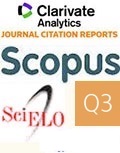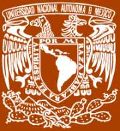|
Boletín de la Sociedad Geológica Mexicana Volumen 74, núm. 2, A020122, 2022 http://dx.doi.org/10.18268/BSGM2022v74n2a020122
|
 |
Paleoecology of Lower Miocene coralline red algae-rich grainstone facies in the Qom Formation (Vartun section, central Iran)
Paleoecología de la facies grainstone rica en algas rojas coralinas del Mioceno Inferior de la Formación Qom (sección Vartun, Irán central)
Amir Hossein Rahiminejad1,*, Mehdi Yazdi2, Amit Kumar Ghosh3
1 Department of Ecology, Institute of Science and High Technology and Environmental Sciences, University of Advanced Technology, Kerman, Iran.
2 Department of Geology, Faculty of Sciences, University of Isfahan, Isfahan 81746-73441, Iran.
3 Birbal Sahni Institute of Palaeosciences, 53 University Road, Lucknow-226 007, Uttar Pradesh, India.
* Corresponding author: (A.H. Rahiminejad) This email address is being protected from spambots. You need JavaScript enabled to view it.
How to cite this article:
Rahiminejad, A.H., Yazdi, M., Ghosh, A.K., 2022, Paleoecology of Lower Miocene coralline red algae-rich grainstone facies in the Qom Formation (Vartun section, central Iran): Boletín de la Sociedad Geológica Mexicana, 74 (2), A020122. http://dx.doi.org/10.18268/BSGM2022v74n2a020122
Manuscript received: November 18, 2021; Corrected manuscript received: December 10, 2021; Manuscript accepted: December 27, 2021.
ABSTRACT
In this paleoecological study we focused on coralline red algae-rich shoal grainstone facies in the Lower Miocene (Aquitanian) carbonates of the Qom Formation in the Vartun section in central Iran. The identified coralline red algae are mainly non-geniculate, although very rare geniculate forms of corallines were also recognized in thin section analysis. The identified algae are represented by Melobesioideae (Lithothamnion cf. valens, Lithothamnion cf. rovereoti, Lithothamnion cf. peleense, and Lithothamnion spp.), Mastophoroideae (Neogoniolithon sp., Spongites spp., and Spongites cf. fruticulosus), Sporolithon spp. (Sporolithon spp. and Sporolithon cf. airoldii), and geniculate coralline (Corallina). The algal taxa mainly display fruticose and lumpy growth forms. The dominance of the former is consistent with high water energy in the identified shoal environment. The presence of Lower Miocene algae indicates that deposition of carbonates took place in warm tropical to subtropical waters in a euphotic marine environment during the Aquitanian. Likewise, high water energy and sediment agitation resulted in taphonomic features such as fragmentation, abrasion, and disarticulation.
Keywords: red algae, rhodophyta, carbonate producers, facies, Miocene, Aquitanian.

